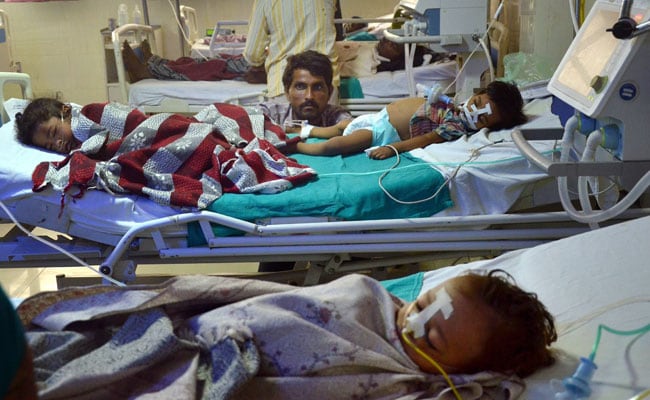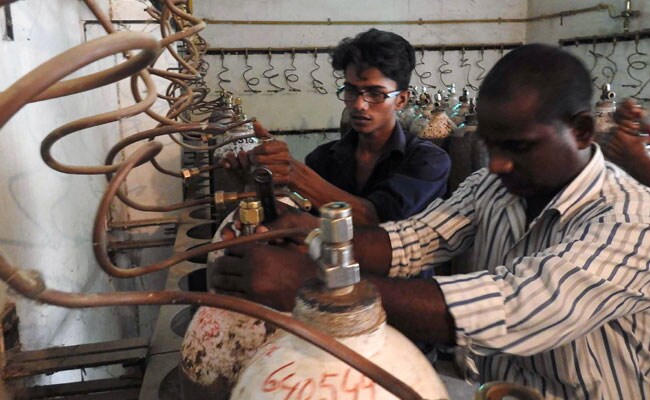Some of the names of the 63 people - largely children - who died in a span of just a few days last week at the Gorakhpur Hospital. My first emotion was disbelief and pain. How could something like this ever happen? Then I felt angry. Angry against what was nothing but sheer apathy and barbaric callousness.
And then I was engulfed with fear and helplessness and broke down. As you read this, my twin daughters are admitted for nearly three weeks in a Neonatal Intensive Care Unit (NICU). And I still hesitatingly ask myself: what if the oxygen supply is suddenly cut off?
We are all programmed to think that babies are born after nine months. We are programmed to believe they will be chubby and cute and after a three-day stay at the hospital, the new arrival will be welcomed home. That's what generally happens. We too had hoped for the same. The camera was ready to snap them in their cribs. And these photographs would have adorned the living room at home. How lovely!

Since last week, 72 children have died at the Baba Raghav Das Medical College in Gorakhpur
With hope in their hearts and a prayer on their lips, this is what parents like me survive on. But for babies which range anywhere between 24 to 34 weeks, the only real thing that matters is oxygen.
Consider this version of an NICU. All around are tiny bodies lying in incubators, many of them breathing rapidly. Their small chests heave laboriously as their immature lungs try and gasp air. Some cry, but only faintly, as their lungs still can't release air with force.
In one corner, an unnamed baby is so young that even days after her birth, her mother has still not been allowed to hold her to her bosom. The infant is extremely underweight, weighing just 850 grams. She hardly has any fat. Her rib cage is seen through her wrinkled skin. The back of her little hand is pierced with an IV line to administer nutrients. Her head is covered in a cap and her eyes open only occasionally. Her face is barely visible; through her mouth, a feeding pipe goes all the way to the stomach; her nose is attached to tubes which are connected to a breathing apparatus.

Parents have alleged that their children died because oxygen supply was disrupted at the Gorakhpur hospital
It is oxygen that helps her survive.
At another end, nurses and neonatologists rush in as a young horrified mother calls out. She was holding her son to her chest when suddenly a meter beeped loudly and menacingly as orange LED lights flashed continuously. The oxygen saturation level of her son has plummeted. The pulse too has plunged. It's the second time this has happened in an hour. The mother looks on frightened. Once again, the oxygen levels are upped. Soon enough, the tiny infant relaxes.
It's oxygen that helps him survive.
At the NICU, it is a constant battle for everyone. Against prematurity, against infections, against lung and heart complications, against brain haemorrhages, against intestinal disorders. Against, against, against. The list sometimes can be long.
And oxygen, which is pumped into those little lungs 24X7, is the first step to survival. It is not merely academic. It's the welcome gift of Life.
I don't know the truth about Gorakhpur. I don't know who exactly is at fault. What I do know from the admission made by the supplier himself is that the oxygen supply was stopped for some reason.
Preterm babies are not always supposed to die as some insist. NICUs give them a huge fighting chance, and survival for at 28 weeks can be as high as 90%, if all goes smoothly.

A team of three central government doctors has rejected oxygen shortage as a factor in the deaths
Officials now say the cause of deaths was not linked to a shortage of oxygen; that alternative arrangements were made; that the numbers of those dead when compared to other years is not stand-out.
Even if that is the case, the fact that a hospital would risk operating without enough oxygen, would ignore warnings from its own employees about the oxygen supply not lasting through the night, would delay the payment of 69 lakhs to an oxygen vendor, all this has to be studied and accounted for by a fair probe.
The dead deserved better. The parents deserved better.
I take your leave. For I must go check if my hospital has paid for their oxygen supply. Gorakhpur has taught me this.
Disclaimer: The opinions expressed within this article are the personal opinions of the author. The facts and opinions appearing in the article do not reflect the views of NDTV and NDTV does not assume any responsibility or liability for the same.


